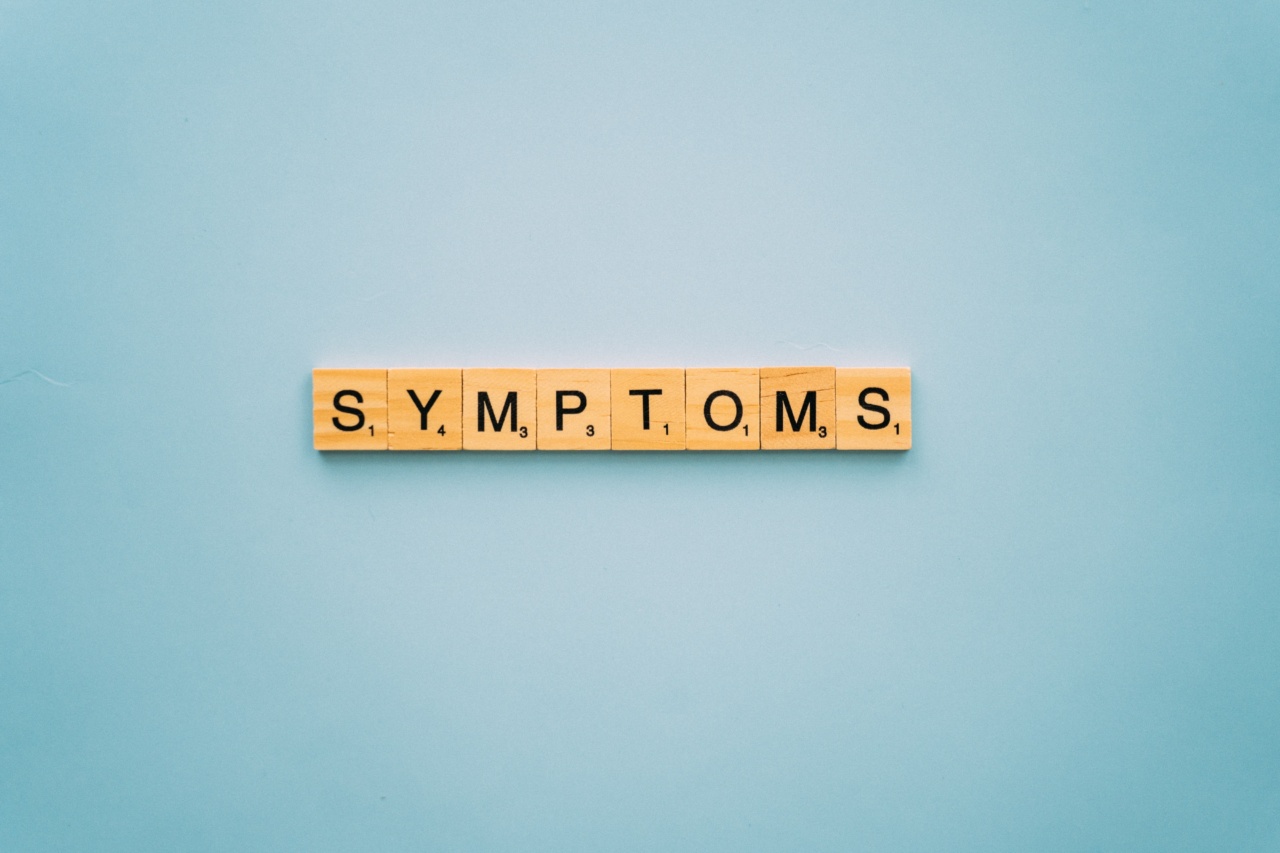Bile is a digestive fluid that is produced in the liver and stored in the gallbladder. It plays a crucial role in digestion and absorption of fats and fat-soluble vitamins. However, when bile flow is disrupted, it can lead to various health problems.
In this article, we will discuss the signs and symptoms of bile problems.
What are Bile Problems?
Bile problems refer to the disorders that affect the production, secretion, and flow of bile in the liver and gallbladder. These disorders can range from benign to life-threatening conditions. Some of the most common bile problems include:.
- Gallstones
- Biliary atresia
- Bile duct obstruction
- Cholecystitis
- Primary sclerosing cholangitis
- Bile reflux
Each of these conditions has its specific symptoms that help in the diagnosis and management of the problem.
Signs and Symptoms of Bile Problems
The symptoms of bile problems can vary depending on the underlying cause and severity of the disease. Here are some of the common signs and symptoms of bile problems:.
1. Abdominal Pain
Abdominal pain is one of the most common symptoms of bile problems. It may manifest as a sharp or dull pain, often radiating to the back or shoulder. The pain may be intermittent or continuous, depending on the underlying cause.
In some cases, the pain may be severe and require medical attention.
2. Yellowing of the Skin and Eyes
Jaundice is a condition characterized by the yellowing of the skin and eyes. It occurs when there is an excess of bilirubin in the bloodstream due to the inability of the liver to process it.
Jaundice is a common symptom of bile duct obstruction and other liver diseases.
3. Nausea and Vomiting
Nausea and vomiting are classic symptoms of gallbladder problems and bile reflux. Patients may experience nausea, especially after eating high-fat meals or lying down.
In some cases, vomiting may accompany nausea, leading to dehydration and electrolyte imbalances.
4. Itchiness
Itchiness is a common symptom of bile problems that are associated with jaundice. The accumulation of bilirubin in the bloodstream can cause itching in various parts of the body, including the hands, feet, and abdomen.
In severe cases, the itching may disrupt sleep, affecting the patient’s quality of life.
5. Fatigue and Weakness
Patients with bile problems may experience fatigue and weakness, especially in advanced stages of the disease.
The underlying cause of fatigue is multifactorial but can be attributed to the poor absorption of nutrients, frequent vomiting, and chronic inflammation.
6. Changes in Stool Color
Bilirubin is responsible for giving the stool its characteristic brown color. However, when the liver is unable to process bilirubin, the stool may appear pale or clay-colored. This symptom is a classic sign of bile duct obstruction.
7. Fever
Fever is a common symptom of gallbladder problems and cholecystitis. Patients may experience a low-grade fever that lasts for several days and is often accompanied by abdominal pain, nausea, and vomiting.
8. Weight Loss
Weight loss is a common symptom of bile problems, especially those involving the liver. Patients may experience a loss of appetite, leading to malnourishment and weight loss.
In some cases, weight loss may be sudden and unexplained, requiring medical attention.
9. Behavioral Changes
Bilirubin can also accumulate in the brain and cause behavioral changes. Patients may experience confusion, irritability, and agitation. This symptom is more common in patients with liver disease and requires urgent medical attention.
10. Back Pain
Back pain is a common symptom of bile duct obstruction. Patients may experience a dull ache in the upper back, especially after eating high-fat meals or lying down. In some cases, the pain may be severe and require medical attention.
Conclusion
Bile problems are a group of disorders that affect the production, secretion, and flow of bile in the liver and gallbladder.
These disorders can have a wide range of symptoms, including abdominal pain, yellowing of the skin and eyes, nausea and vomiting, itchiness, fatigue, weakness, changes in stool color, fever, weight loss, behavioral changes, and back pain. If you experience any of these symptoms, seek medical attention immediately.



























